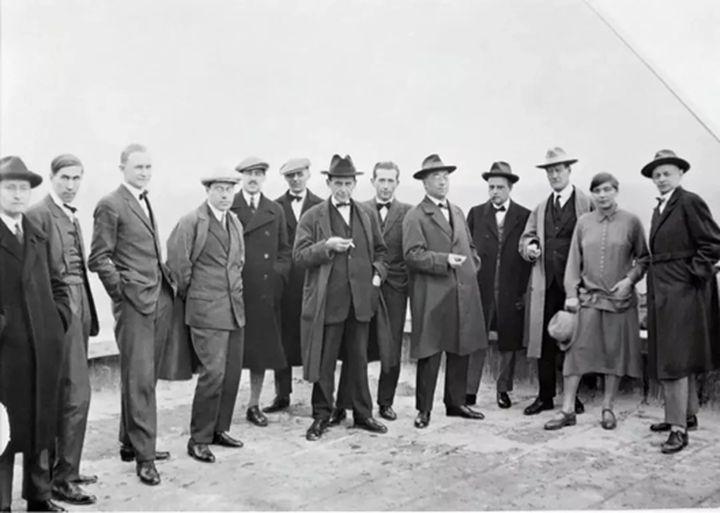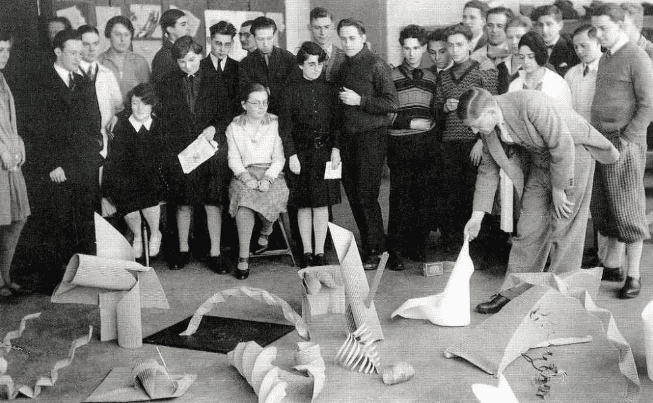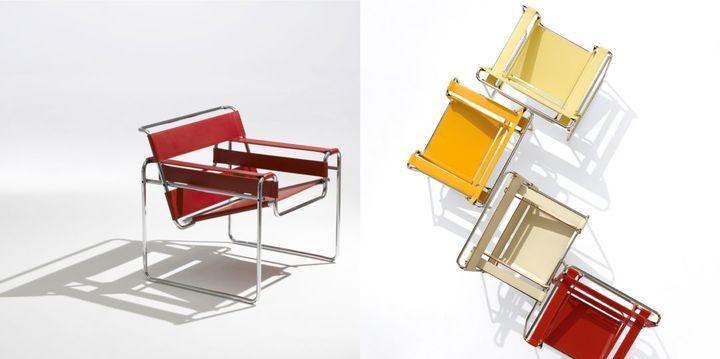Bauhaus: A Timeless Classic That Endures for a Century
If you're a designer or design enthusiast, you're probably not unfamiliar with Bauhaus, or at least you've heard of it. However, many people mistakenly think of Bauhaus as just a design style, when in fact, it is more of a design spirit.
In this article, we will briefly introduce the "past and present" of Bauhaus, giving you a quick understanding of what Bauhaus is and its distinctive design style. Without further ado, let's get started.

In this article, you will learn:
- What Is Bauhaus?
- The Development of Bauhaus
- What Is the Bauhaus Design Style?
- The Influence of Bauhaus Design Style
What Is Bauhaus?
The term "Bauhaus" was coined by German architect Walter Gropius, derived from the German words "Hausbau" (house construction) inverted. Later, it was further developed by another German architect, Ludwig Mies van der Rohe.
Walter Gropius was also the founder of the Bauhaus University in Weimar, Germany. He was a prominent figure in modern architecture and architectural education and one of the pioneers and founders of the modernist architectural movement.

Walter Gropius
Born in 1883 in a family with a strong artistic background, Gropius came from an affluent background. His grandfather was a renowned painter, and his great-uncle, Martin Gropius, was an architect who designed the present-day Martin Gropius Bau in Berlin.
With a well-educated family background, Gropius was imbued with a noble demeanor and exceptional intelligence. He was a true academic achiever, completing dual degrees within two years while studying in Berlin and Munich, with outstanding academic performance.
After graduation, Gropius served as a volunteer soldier for a year before joining Peter Behrens' office. After three years at Behrens' office, Gropius decided to establish his own practice.
Just one year after founding his own office in 1911, Gropius designed his breakthrough work: the Fagus Factory. Although predating the establishment of Bauhaus, it already showcased the modernist style that Bauhaus would later embrace.

Fagus Factory
After participating in World War I, Gropius aimed to transform Germany and influence the world through design education, and history has proven that he succeeded.
In 1919, Gropius founded the Bauhaus School to combine art and technology to address the issues arising from the industrial revolution.
Gropius believed that "a new design movement must be formed to influence the country's industry." In response to his call, a group of radical designers and artists joined Bauhaus as instructors, enriching and expanding the ideas and techniques of architectural design.
Gradually, a new style of applied arts and architecture emerged at Bauhaus, characterized by:
- Emphasis on meeting practical requirements.
- Utilizing the technical and aesthetic qualities of new materials and structures.
- Clean and concise forms with flexible and diverse compositions.

Various Masters of Bauhaus
The Development of Bauhaus
Bauhaus is the world's first institution established solely for the development of design education. It laid the foundation for modern design education and industrial design, earning the title of the "cradle of modernist design."
The educational philosophy of the Bauhaus school can be summarized as follows:
- It emphasizes creative freedom and rejects imitation and adherence to traditional norms.
- It combines craftsmanship with machine production, promotes the exchange and integration of various art forms, and encourages learning from painting and sculpture.
- It aims to cultivate students' practical skills and theoretical knowledge.
- It establishes a connection between school education and societal production.

In that tumultuous era, the development of Bauhaus was not without challenges. Due to wars and the influence of the Nazi regime, the school changed locations several times:
- From 1919 to 1925, the school was located in Weimar, Germany, with Walter Gropius as its director.
- From 1925 to 1932, it was in Dessau, Germany, under the leadership of Hannes Meyer.
- From 1932 to 1933, it moved to Berlin, Germany, with Ludwig Mies van der Rohe as the director.
However, in April 1933, Bauhaus was forcibly closed under orders from the German Ministry of Culture.
During the tenure of the three directors, Bauhaus experienced the development of three different personalities: Walter Gropius' idealism, Hannes Meyer's communism, and Ludwig Mies van der Rohe's pragmatism.
Despite the challenges, their influence enriched and complicated the essence of the Bauhaus spirit. After the reunification of Germany, the school was renamed Bauhaus by the German government in 1995-1996 and became a renowned public comprehensive design university.
Although the original Bauhaus school existed for only a short period of 14 years, its influence on design has lasted for a century.
What Is the Bauhaus Design Style?
We can summarize the core design principles of Bauhaus in the following three points:
- Unity of art and technology.
- Design is focused on functionality rather than the product itself.
- Design must adhere to principles of nature and objectivity.
These points may sound abstract, so let's look at some famous designs from the Bauhaus era to feel what the Bauhaus design style is all about.
1. Universal Font
During the Dessau period of Bauhaus, the school building prominently displayed the word "BAUHAUS" in a font called Universal, which was specially designed for the building in 1925 by famous graphic designer Herbert Bayer.
The highly geometric shape and grid-like design of the letters, casting circular and square shadows in the sunlight, perfectly complemented the sleek and minimalistic architecture of the building. Without any unnecessary ornamentation or color, it offered a fresh visual experience.
Behind the design of this font lies the initial concept of Bauhaus: form follows function.

Later on, this font gave rise to the Bauhaus 93 typeface. With its geometric elements, functionalism, and grid system, the Universal font, embodying the Bauhaus philosophy of type design, paved the way for the trend of geometric fonts.

2. Wassily Chair
The Wassily Chair was designed by Hungarian architect Marcel Lajos Breuer. It is the world's first leather chair with a steel tube frame that is decorated with nickel plating.
Breuer was initially a student at Bauhaus and later became a teacher there. For him, any material in everyday life, if applied appropriately, would showcase its inherent value in design. The inspiration for the Wassily Chair came to Breuer while he was riding a bicycle.

3. Brno Chair
This chair called the Brno Chair, was designed by the famous modernist architect Ludwig Mies van der Rohe, who was also the last director of the Bauhaus.
In his architectural design, Ludwig Mies van der Rohe liked the sense of tranquility in his lines, the exquisite control of proportions, and the concept of fluid space.
His philosophy was also reflected in his furniture design. The Brno Chair's suspended seat broke the tradition of "a chair must have four legs". From the side, the smooth C-shaped steel frame outline provided all the support for the whole chair.

4. The Club Chair
The Club Chair, completed in 1928, was designed by Josef Albers, a German painter, designer, and master of modern minimalism. Similar to Breuer, Albers also studied at Bauhaus before becoming a teacher.
Square shapes can be considered his favorite, as they are prominently featured in his artwork and designs, creating a distinctive style known as "hard-edge art."
The most striking feature of The Club Chair is its square frame, made of peachwood and oak materials. The light brown frame, combined with a flat and elegant cushion, directs one's gaze and attention toward the structure and lines of the chair.

The Influence of Bauhaus Design Style
Bauhaus is the birthplace of modern design, known for its advocacy and practice of functional, rational, and geometric industrial design. This design style, considered a classic of modernist design, has had an indelible impact on 20th-century design.
The influence of Bauhaus lies not only in its tangible achievements but also in its design spirit. The ideas of Bauhaus were revered as classics of modernism for a period of time.
Today, the influence of Bauhaus can be seen worldwide, in modern design in Japan, the 798 Art Zone in China, and the development of modern cities like Chicago.
Even now, the design principles of Bauhaus continue to shape architects, designers, artists, and our daily lives worldwide. For example, globally popular brands like Apple, MUJI, and IKEA can trace their design inspiration back to Bauhaus, which originated a century ago.
Product Recommendation:
If you are a fan of Bauhaus style, you know how important it is to create designs that are functional, simple, and geometric. You also know how challenging it can be to use complex software and tools to achieve your creative vision.
That's why we want to introduce you to TourBox, a custom editing controller that works with almost all creative software and is tailored for all content creators, including illustrators, photographers, and video and audio editors.

TourBox is a device that allows you to control numerous functions with one hand, while keeping your dominant hand free to use a keyboard, mouse, or graphics tablet.
You can customize it to whatever you need, whether it is complicated keyboard shortcuts, mouse actions, or the built-in features that TourBox offers. You can also use the knob, dial, and scroll to adjust parameters, rotate the canvas, change the brush size, and more.
The design principles of Bauhaus have had a significant impact on various fields, including architecture, graphic design, and even fashion design. The most important thing is to understand what Bauhaus's design style is and then try to incorporate and develop its spirit in your own designs.
This concludes our article on what Bauhaus is and its design style. We hope this has been helpful to you.